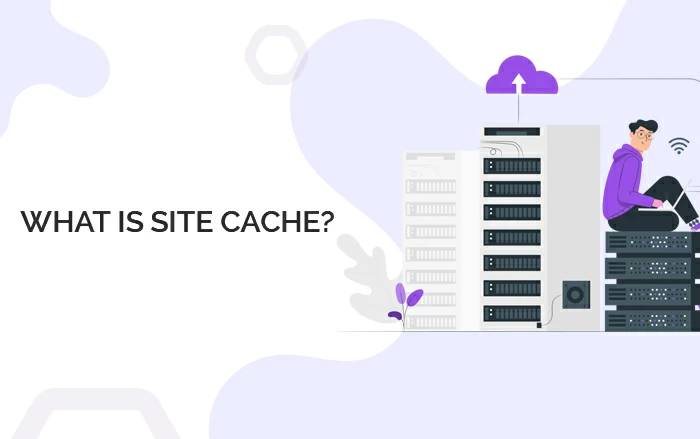Cache can give you what you have been desired for i.e., higher website speed by dropping down the load it carries. Caching works as the temporary memory of a site to remember & store all the requested web page data (text, images, and content) of each user on every visit.
But there are different types of cache that have different importance on a site and act differently. Where seekers can’t hold on to slow websites and instantly come back, caching will help you decrease your WordPress site’s load time to a greater extent.
As a matter of fact, the faster your website will load, the better the user experience & SEO ranking it will create.
But here we are going to talk about site cache, browser cache and server cache and the major differences between them. First of all, let’s take a look at each of the cache types separately and understand what they are.
What is Site Cache?

A site cache is a way to temporarily store data like web pages, images and other media content when the web page loads for the first time by the visitor.
A site cache is also commonly known as a HTTP or page cache.
Through site caching, the visitor’s data is remembered by the site to provide web page and content much faster on each re-visit in the future.
Sounds similar to a person’s memory? Indeed, site cache is like a temporary memory creating method for a website.
When a user visits a page for the first time, a site cache stores selected content to memory. And, when that same page is visited again, the site cache helps to display the same content with much quicker loading time compared to the first visit.
While site cache is helpful for a website creator to increase site speed, the site caching is the developmental concept from the client’s side.
That means, it is controlled by the site users.
However, a website can only handle limited client-side caching for a limited period to store saved data.
This way on any update on the webpage, content can be set or requested to expire after a certain time. It ensures that end users always stay up to date with the website and its fresh content. On the other hand, the pages that haven’t changed can still be loaded from the cache to speed up the loading time.
What is Browser Cache?

It is another client-side type of caching. That means the working of the Browser Cache is quite similar to Site cache but still differs as it is built for a browser.
In browser caching, content is saved or stored on your computer through the browser. The saved files and stored content are grouped up with the files associated with the browser you use.
Here are the types of files that browser cache temporarily saves:
- HTML pages
- CSS stylesheets
- JavaScript scripts
- Images
- Other types of multimedia content
Although some browsers have high caching systems such as Chrome, Safari, and Firefox, every browser always works on some form of browser cache.
Here, a website is able to connect with the user’s browser. So, when a page makes some changes, the stored content in the cache becomes no longer useful and browsers replace the old content with the new or updated one.
This is only done when the end user manually clears out their browser’s cache.
What is Server cache?
A server cache is closely related to site caching. Instead of storing the data from the client side, server cache stores site server data.
Server caching has nothing to do with the end user and browser. It is fully controlled and handled by the server your site works on.
There can be several types of server caching, but here are three main types:
Object caching – In this server-side cache stores database queries for quick retrieval on repeated page loads.
CDN caching – A Content Delivery Network (CDN) is a cluster of servers that are geographically located all around the world. They create content cache using the server closest to the end user to make loading faster.
Opcode caching – PHP code is compiled between each request, then stored in a cache to make repeated page loads faster.
Now, let’s see what are the differences between each cache type.
Difference between Site Cache, Browser Cache and Server Cache
Now that we know about each type of cache, it’s time to understand the differences between them.
Site cache:
- Stores content like web pages, images, text etc.
- Client side caching
- Helps in serving content much quicker on each visit
Browser Cache:
- Saves limited types of data like HTML pages, CSS stylesheets, JavaScript scripts, Images and other multimedia files.
- Files are heavier and takes time to load, thus, stored in the computer
- Controlled by the user’s browser
- Create Client-side cache
- Helps in serving content directly without requesting from server
Server Cache:
- Stores content, code, queries, or similar data on a server
- Server-side caching
- Controlled by the server instead of a browser or user.
- Holds a lot of content
· Server caching has various types including Object, CDN, and Opcode caching.



Thanks for ones marvelous posting! I truly enjoyed reading it, you could be a great author. I will ensure that I bookmark your blog and may come back later on. I want to encourage you to continue your great posts, have a nice morning!
Great Blog!